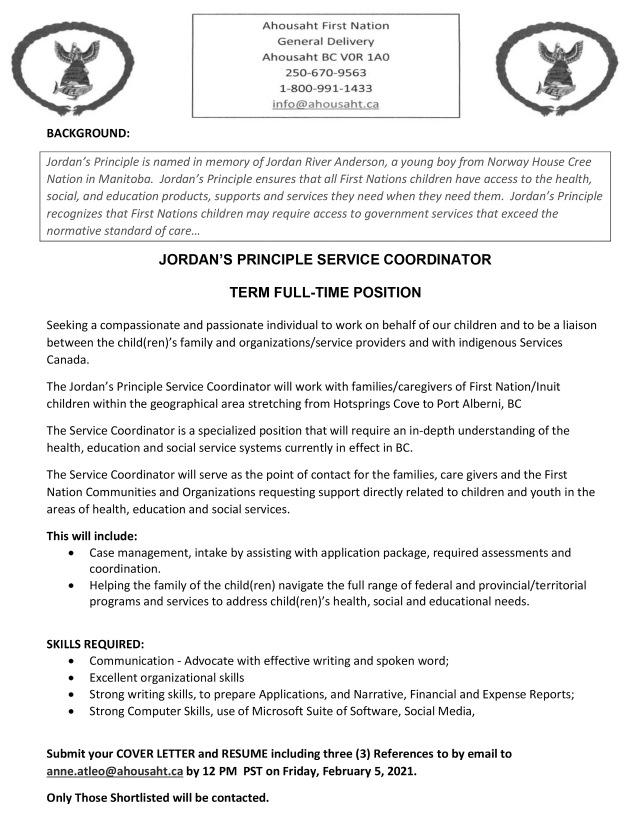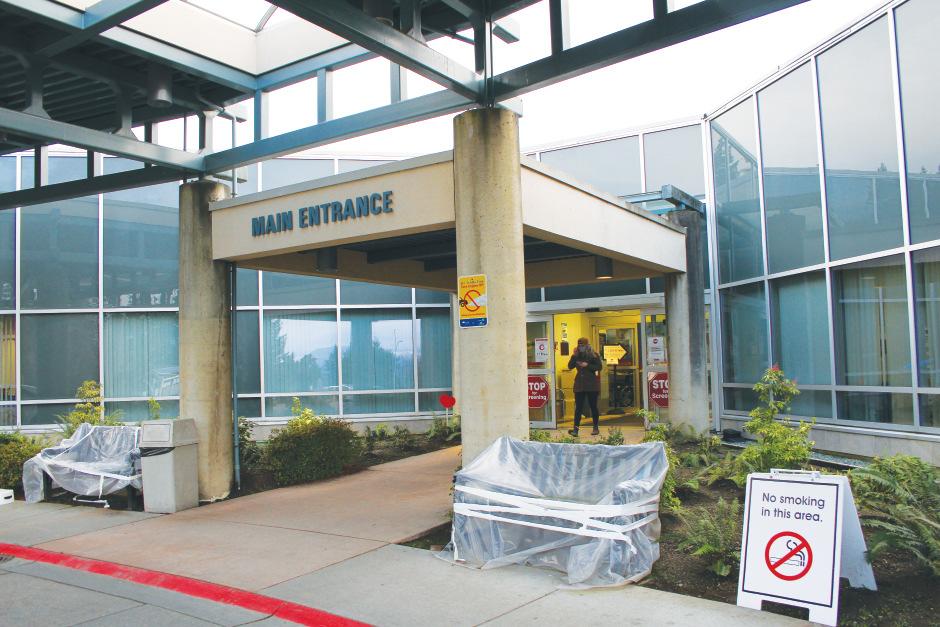
40 minute read
Nootka Sound spill stabilized
West Coast Marine Response Command photo Since early December oil containment booms have been deployed off Bligh Island in Nootka Sound to control a stream of oil leaking from a long-sunken wreck.
Nootka Sound spill ‘stabilized’ despite challenges
Advertisement
The MV Schiedyk wreck lies 360-400 metres down after striking a reef in 1968, leaking up to four litres per hour
By Mike Youds Ha-Shilth-Sa Contributor
Nootka Sound, BC - Off shore booms and shoreline cleanup crews have so far managed to contain and collect heavy fuel oil seeping from a shipwreck in Nootka Sound, a unifi ed command group says. Jeff Brady, federal incident commander, said they have made steady progress since the operation began in early December 2020 but must still determine how to plug, patch or remove oil slowly seeping from the sunken wreck of MV Schiedyk. “I guess the key word is stabilized,” said Brady, a Coast Guard pollution response specialist, summing up the situation six weeks into the response. They have reached a point where the immediate threat from oil, welling to the surface at a rate of one to four litres per hour, is under control. A team of 30 on-site workers continues to focus on oil recovery in order to prevent long-term environmental damage while another 30 personnel support the eff ort remotely. Diffi culties encountered due to COVID, weather and communications with the site off Bligh Island have been overcome, but critical questions remain, Brady said. A remotely operated vehicle has been used to gather initial information, but authorities have not determined what will be required to resolve the situation. “There are still a lot of challenges ahead for us,” he said. “We still don’t know how much oil is on board.” MV Schiedyk struck a reef in January 1968 and lies hull up, 360-400 metres down, leaking one to four litres per hour. The bulk carrier had an estimated fuel capacity of 300 tons, but it was certainly not topped up after sailing from Seattle to Gold River, Brady said. The type of oil has yet to be confi rmed although they assume it is Bunker C, more persistent in the environment than diesel. Some of those answers are expected to come through technical assessment and source control contracts. Requests for proposals will be posted soon so that the contracts can be awarded in February, Brady said. Winter weather can be rough at the best of times on the exposed coastline in Zuciarte Channel. “We’ve had a few shutdown days and equipment breakdowns,” Brady said. “It’s a pretty nasty place and we’ve had well over 40 knots at times. The weather has had an impact on the situation.” On one occasion, oil appeared to be drifting toward the historic village of Yuquot, raising additional concerns before the threat subsided. Mowachaht-Muchalaht Hereditary Chief Jerry Jack, First Nations incident commander, has visited the Bligh Island wreck site a couple of times since December. “There’s only been a few days, from what I’ve seen, where the weather has been a factor,” Jack said. In cases where the boom lines were broken, they were quickly repaired, he added. “It was stormy for a while, but as far as I can see, they’re doing the best that they can.” Ehattesaht First Nations fi sheries department, Hesquiaht First Nation and Nuuchah-nulth Tribal Council are also part of the co-ordinated response. In-depth traditional knowledge together with technical and scientifi c expertise have been instrumental to the eff ectiveness of the response, Brady said. Jack said the spill response has been “overwhelmingly good” from his point of view. “It’s being contained, and I don’t think it’s gone past South Bligh Island,” he said. “Everyone is working really well together.” Bligh Island lies in Mowachaht-Muchalaht territory east of Nootka Island at the head of Muchalat, Tlupana and Tahsis inlets. The island and surrounding archipelago are part of a provincial marine park and the area is usually frequented by boaters. A Coast Guard marine notice cautions mariners to steer clear of the emergency zone, much of which lies within the park boundary. Buoys and beacons are being installed for safety and monitoring. To date, there seems to be little eff ect on wildlife in the area, said Darcy Sego, provincial incident commander with the B.C. environment ministry. Early in the response, one oiled sea otter was observed but not captured. Another otter was found dead, but a necropsy concluded that was not related to oiling. “There is minimal impact on wildlife in the area,” Sego said. “That’s probably due to the winter season and wildlife in the area avoiding the active operations.” Two shoreline cleanup assessment teams are planning to survey about 100 kilometres of shoreline. Bird and mammal surveys have been done regularly. Wildlife observations by contractor Focus Wildlife have totalled thousands of birds across 30 species, though mew gulls account for more than half of the sightings. Humpback whales and orcas have been observed and identifi ed in the vicinity. Brady said it is tough to estimate how long the operation will have to continue. It will probably be late May by the time the technical assessment is complete. “We’re planning for months ahead and for the operation to continue until late spring or early summer,” he said. “If the oil keeps upwelling, we have no plans to go anywhere.” Generally, vessel owners are held responsible for cleanup costs. “The Coast Guard is still building a fi le with the intention of doing cost recovery,” Brady said. “No one is stepping forward and saying, ‘I’ll pay the bills.’” Periodic updates can be found at the unifi ed command website, spillresponsebc.ca.
Born at a fi sh cannery near Tahsis in 1942, the fl uent speaker had deep ties to several Nuu-chah-nulth nations
By Denise Titian Ha-Shilth-Sa Reporter
Port Alberni, BC – “He joked he could have been the mayor of Port Alberni, he knew so many people,” said Yvonne Lucas of her husband Harry. Lucas, a well-known Nuu-chah-nulth elder, died in a boat accident on his way to Hot Springs Cove on Dec. 31, 2020. He was a man that lived in the moment and made friends everywhere he went. At his funeral service, Reverend Rick Lindholm joked that Harry and his elder brother, the late Dr. Simon Lucas, weren’t the shy ones in the family. Yvonne says the Lucas family is a large one and most of the siblings are quiet and reserved, but not Harry and Simon. Born at Ceepeecee (a former fi sh cannery near Tahsis) in April 1942, Harry was the second child of Matthew and Mamie Lucas. Harry attended Christie Indian Residential School on Meares Island before going to St. Mary’s Indian Residential School in Mission, B.C. “He came back to Port Alberni and went to Alberni District High School to fi nish his education because his buddies, Wes Thomas and them, were there,” said Yvonne. In his early years Harry’s parents transferred the family from Hesquiaht to Ehattesaht but, according to Yvonne, the Hesquiaht people wanted Matthew back and so they went to Ehattesaht to bring them back home. “They even took their house apart and brought it to Hesquiaht and put it back together,” said Yvonne. Harry, through his marriage to Yvonne Gus, had ties with the Tseshaht community. He transferred to Hupacasath, but, according to Yvonne, he always said he was from all Nuu-chah-nulth nations. Yvonne said she and Harry met in Port Alberni in 1969 through relatives and got together as a couple in 1970. One of his good friends was late Eugene Touchie. One night they partied together and Touchie, with the help of friends, pranked Harry by spray painting his old car white, decorating it with embarrassing slogans. Harry thought it was funny and drove the car around town as it was. “He was so outspoken, he didn’t care what anyone thought of him,” said Yvonne. In the beginning Harry supported his family working on the log booms in Port Alberni. “But he was a fi sherman fi rst,” said Yvonne, adding that he went out fi shing whenever he could. When he tired of the logging industry, he went back to school to become a carpenter. “He faced racism there but he also made lots of friends,” Yvonne recalled. One of Harry’s best talents was fi tting in and making friends. As a trained carpenter, Harry built a family home on the Tseshaht reserve with help from his wife. “He showed me a lot,” said Yvonne. Over time, Lucas lost interest in carpentry. He would visit his friend Tat Tatoosh at the Nuu-chah-nulth Tribal Council. Tat was, at that time, the Nuu-chah-nulth language interpreter. Being fl uent in the Nuu-chah-nulth language, the two men enjoyed speaking together in their mother tongue. Tatoosh taught Lucas how to write the Nuu-chah-nulth language. “When Tat left (the NTC) Harry took over language interpretation,” said

Photo by Eric Plummer The long life of Harry Lucas ended at sea on New Years Eve while he was travelling to Hot Springs Cove. Above Lucas is pictured dancing during a potlatch held by the Samuel family in Port Alberni in 2017. Yvonne. Lucas eventually moved on from his employment with the NTC, but he was a jack of all trades, having no problem fi nding work and new friends. “Dad was a social butterfl y,” said Layla Lucas of her father. “He was so generous.” He would help struggling people, buying them groceries or paying for a restaurant meal. “Random strangers – he overheard them saying they were celebrating their anniversary, so he paid for their dinner,” said Layla. “And he’d bring strays home, one time he brought three people home,” laughed Yvonne. Many people remembered him for his Chief Dan George look. “He loved that he resembled Chief Dan George, who was my mom’s relative,” said Yvonne. One of his legacies is the existence fl oor hockey in Nuu-chah-nulth sports. Back in the ‘70s, Simon Lucas worked as the recreation coordinator for the West Coast District Council, the predecessor to the NTC. Yvonne said Harry worked for his older brother and pushed to include fl oor hockey in the roster of organized sports when the elder brother was more focused on basketball. “Floor hockey is still popular today,” said Yvonne. Harry Lucas not only found work on Nuu-chah-nulth language projects, but also lent his logging expertise in the moving of the Language Revitalization Pole Project from Bamfi eld to Port Alberni. Even in his late 70s, Harry worked hard. “He still went up the mountains to cut fi rewood,” said Yvonne. But she could tell things were changing with Harry. His health was declining, and he wasn’t the same after the loss of his brother and other close friends in his age group. It seemed an air of sadness had set in. But Harry poured his attention into something he was passionate about – fi shing. In the late 2020, Lucas began working on his boat. He had planned to move to Hot Spring Cove for the season to help his younger brother prepare his own boat for fi shing. Lucas built a blue wooden cabin on his herring skiff so that he could travel to and from Hot Springs Cove in comfort. He loved to take it out fi shing. His joy shines through in a video, showing Harry doing a happy dance at the stern of his boat, celebrating a cooler full of fresh salmon that he and his brother just caught. But Yvonne was concerned when she heard about his plan to go to the cove in the winter. “There’s bad weather, but there was nothing I could say to discourage him from doing it,” said Yvonne through tears. To make matters worse, Yvonne didn’t know until that fi nal day that he was making the two-hour trip from Tofi no to Hot Springs Cove solo. “Something should be done about people traveling alone in the winter, especially seniors,” said Yvonne. Her husband was 78 when he drowned on New Year’s Eve, likely as he was entering the mouth of Hot Springs Cove. When she hadn’t heard from him by about 5 p.m. Yvonne contacted her niece in Hot Springs Cove, asking if anyone there knew anything. They knew he was seen leaving Ahousaht at about 3 p.m. and should have arrived in Hot Springs Cove an hour later. Search parties went out from both Hot Spring Cove and Ahousaht. The following day both the Canadian Coast Guard and volunteers from Tla-o-qui-aht joined the search. Sadly, his remains were found by his granddaughter on the second day of the search. The young woman was searching the shoreline of Hot Springs Cove and found Lucas near Muchasnit, a beach near the north entrance of the cove. Lucas was remembered at a small pandemic-restricted service in Port Alberni on Jan. 9. Yvonne says she will hang on to his ashes until weather improves, then bring them somewhere dear to him. Harry and Yvonne had two children together and Harry had another two children from a previous relationship. Sadly, the boy he had from the previous relationship died shortly after he was born. Harry leaves behind Yvonne, two daughters and a son. “He had fi ve grandchildren and they were the most important things to him,” said Yvonne. Yvonne and her Layla wish to thank the people who knew Harry and have treated them so well since his passing. Yvonne said she needed to replace a tire on her car after Harry died. When the people at Kal Tire learned she was Harry’s wife, they gave her a huge discount, saying they knew him. The Lucas family thanks Ahousaht, Hesquiaht and Tla-o-qui-aht search and rescue teams and volunteers, the Canadian Coast Guard, Quu’asa staff , Tim Paul and their Tseshaht relatives that provided comfort and support in Port Alberni. “He was part of the family,” said Yvonne.
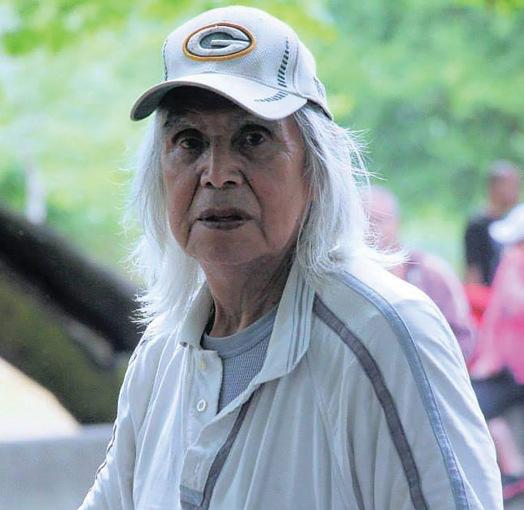
By Karly Blats Ha-Shilth-Sa Contributor
Port Alberni, BC - Results of an investigation looking into allegations against the Port Alberni Shelter Society (PASS) have been submitted by the contractor to BC Housing and the fi ndings should be available soon. A protest began late last year by individuals citing a number of allegations against the society’s management and operations, including not allowing people to return to the shelter if their name was on a banned list and strict rules. “The next step in this process is for BC Housing to review the report’s recommendations and to develop actions and responses,” said BC Housing in an emailed response. “We will share more information upon completion of our review in early February.” For now, those living on the streets of Port Alberni - or precariously with friends and family - can continue to hope for a more permanent housing solution. Experiencing homelessness in the Alberni Valley has been diffi cult for 33-year-old Lydia Williams from Ahousaht First Nation. Williams has been on and off the streets for the past 12 years and will often sleep rough outside the overdose prevention site on Third Avenue or in an alley behind Shoppers Drug Mart. She says it can be diffi cult emotionally during the long cold nights on the street. Williams said she’s no longer comfortable at the Port Alberni Shelter (Our Home on Eighth) because of an incident that occurred there in the past. “I don’t have many supports,” Williams said outside the overdose prevention site. “I’ve reached out a lot to my band but they keep telling me the same thing, I’m not living on reserve.” Williams wants people to know she’s harmless and “just like everybody else.” A common thread amongst those facing homelessness in Port Alberni is the diffi culty of fi nding supportive, or low-income housing. For Williams’s aunt, who preferred not to be named, it’s been impossible to fi nd a home. “I apply, apply, apply but when you apply there’s 25 other people applying for it too,” The Tseshaht woman said. “For me there’s no help whatsoever, we’re the black sheep. Every one of us are the black sheep of our family.” If she can’t stay with her kids or other family members, Williams’s aunt will sleep outside the overdose prevention site or under a picnic table. On the streets, there’s also the shared feeling of community and a sense of protection amongst those experiencing homelessness. “This is my family…they will protect me when they have to,” Williams’s aunt said as she motioned to others around her outside the overdose prevention site. Prevalence of medical conditions Mental health issues and addiction are prevalent among homeless individuals and often add to the diffi culty of fi nding housing. According to the BC Housing homeless count from 2018, 56 per cent of the 7,655 respondents in the province who are experiencing homelessness disclosed they had an addiction, 44 per cent reported a medical condition and 40 per cent reported a mental illness. For the Alberni Valley specifi cally, of the 147 respondents, 86 per cent reported they had between one and four medical conditions. Forty-eight per cent of the homeless re-
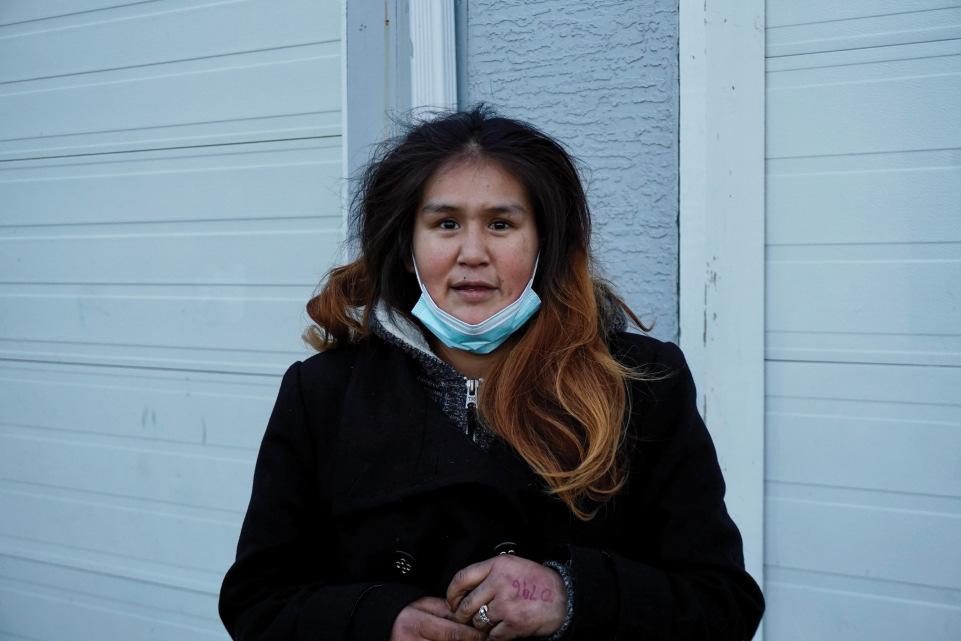
Photos by Karly Blats Lydia Williams from Ahousaht First Nation has lived on and off the street of Port Alberni for the past 12 years. She says lowincome housing has been extremely hard to fi nd.
Port Alberni resident Mark Braunagel wants to help those suff ering from addiction by building a therapeutic recovery centre with secondary housing. Trailers continue to occupy Randy Brown’s property on Fourth Avenue next to the Wintergreen Apartments where homeless individuals are living.
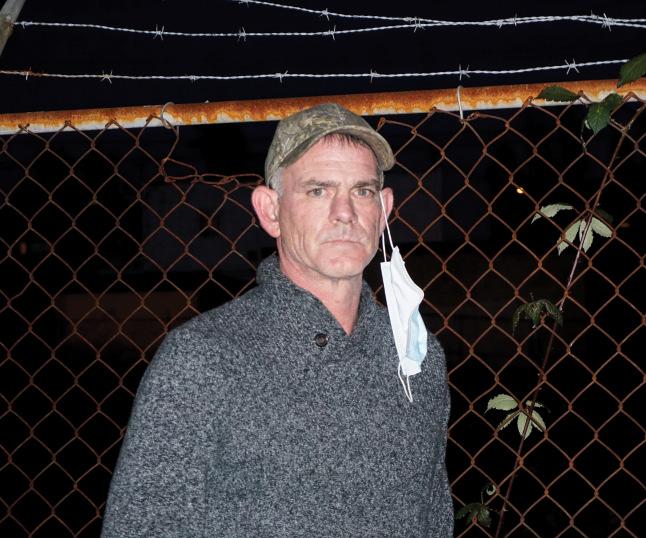
spondents in Port Alberni identifi ed as First Nation. Tia Wouters from Yuułuʔiłʔatḥ First Nation attributes her struggle with homelessness to her heroin addiction. The 30-yearold is currently sleeping where she can until she secures a trailer at Randy Brown’s property on Fourth Avenue beside the Wintergreen Apartments. Wouters didn’t touch drugs until she was 26 despite both her parents having their own struggles with addictions. She said she became addicted after trying heroin for the fi rst time with a boyfriend. “There’s no just trying heroin…I liked it too much,” Wouters said as she kept warm in an apartment under the Sobering Centre on Fifth Avenue. “I should have known better, I always hated heroin…how could somebody ruin their whole life with something like that and keep doing it. It must be good if they’re willing to throw everything away for it. I really wish I never did.” Wouters said she’s got herself sober four times and was clean for nine months, but the pull of addiction is too strong. Now she’s working as a maintenance helper for Randy Brown, cleaning up his property on Fourth Avenue where several trailers line a lot next to the apartment building for homeless people to live. The City of Port Alberni recently ordered Brown to remove all trailers from the property, as they were deemed unsafe to live in and don’t have proper permitting. Brown told city council he had no plans to follow the city’s orders and won’t be removing the trailers. Wouters is looking forward to having a roof over her head. “I’ve had to sleep outside a couple of times now, it’s not fun,” she said. “Sometimes you don’t want to bug anybody after a while. There’s so many of us now… sometimes it’s not even people with addictions, sometimes it’s people that had a bad landlord or something like that.” At one point Wouters was living at the Port Alberni shelter but decided to leave as she wasn’t getting along with roommates. She’d love another opportunity to secure a room there. “I tried to get my own room, they couldn’t do that. Now they just give you the EWP (emergency winter program),” Wouters said. “It takes a lot to get upstairs in the shelter, to have your own apartment there. I’d love to live there because my mom has her own apartment. It’s awesome to be able to get up there and stay up there.” Wouters added that fi nding low-income or supportive housing in Port Alberni is near impossible because of an extensive waitlist. “It’s a long list,” she said. Need for local treatment centre A Port Alberni resident is looking to help those experiencing addiction by proposing a therapeutic treatment centre for the Alberni Valley. Mark Braunagel has been busy pitching his idea to city representatives, MP Gord Johns and Mid-Island Pacifi c Rim MLA Josie Osborne. His goal is to build a 30-40 person treatment centre, with a detox facility that would transition into a 90-day program. “After the 90-day program, there’s going to be apartments or condos on the

same property and you move into secondary housing and live with one or two roommates, and at least one person in there will be someone who’s ahead of you in the program,” Braunagel said. “The theory on it is you can stay there for up to two years and you have to go to school or you have to be working.” Braunagel has been through treatment programs several times over the years and said the only thing that worked for him was having secondary housing. “That fi rst year you need a lot of support, you need a lot of help,” he said. “It’s very low, the success rate a year down the road…so that fi rst year is crucial.” Braunagel said he’s seen the cycle many times where someone will go to a 30day treatment program, get out and have nowhere to live, causing them to fall back into their old lifestyle. “When you’re done [at treatment] they give you a welfare cheque and a bus ticket back to Port Alberni,” he said. “There’s no hope. We have to give them an option, we have to give them hope.” Braunagel added that sharing the stories of those in active addiction and living on the streets is important to help shine light on a need for more treatment options. Through his newly formed society, Alberni Valley Recovery Centre, Braunagel has been fi lming individual’s testimonies about
Trailers continue to occupy Randy Brown’s property on Fourth Avenue next to
Wintergreen Apartments where homeless individuals are living. their struggles with addiction and housing and sharing them on social media. He hopes to eventually produce a documentary to highlight the issues further. In one of his shared videos, it shows Uchucklesaht member Charlie Cootes describing his struggle with addiction and homelessness. “I was displaced by my job in 2010 and I took a buyout,” Cootes said in the video. “I worked for 21 years for my First Nations so I was quite happy to take a break at that time and then that break turned into this lifestyle I’m in where I started recreationally using drugs. I moved from one to the other…and ended up where I’m at doing heroin and living on the street.” Cootes says if there was an option for him to go to a treatment centre that off ered secondary housing after completion he’d “absolutely” take the opportunity. “That’s the biggest thing for sure, what do you do afterwards, where are you going to go,” Cootes said. “If you go down to where we are, you’re just going to start using again, it’s pretty diffi cult not to when everyone else around you is and there’s a willingness to share.”


Photos submitted by Roy Jack Last August Roy Jack cycled 1,500 kilometres on Vancouver Island to raise funds for childhood cancer research.
Roy Jack plans cycling ride to Edmonton
Ahousaht member prepares for his fi fth bike trek, eyeing the 1,200-kilometre journey
By Sam Laskaris Ha-Shilth-Sa Contributor
Nanaimo, BC – Roy Jack is hoping to substantially step up his eff orts for his annual cycling fundraising eff orts. This marks the fi fth consecutive year that Jack, a member of Ahousaht First Nation, will participate in the Great Cycle Challenge. This event sees cyclists set a goal of how far they can cycle in a month. During the month-long challenge participants raise funds with the proceeds going to childhood cancer research. In 2020, Jack raised about $5,600 while offi cially cycling 1,500 kilometres last August. Cyclists from throughout Canada, the United States and Australia traditionally take part in the challenge. This year’s event will once again be held during August. Jack, who lives in Nanaimo, has already publicly announced his goals this year. Though he has established an initial target of $5,000, he is actually hoping to raise twice that amount. In previous years, Jack has done all of his cycling during the challenge on Vancouver Island. But he’s planning to deviate from that in 2021. He’s planning to do the majority of his cycling in August during a ride from Vancouver to Edmonton, a trek that is about 1,200 kilometres long. “I’m hoping that it would be a six or seven-day trip,” Jack said. But Jack, 46, is hoping for plenty of assistance in order to help him fulfi ll his goals. He has already commenced talks with some business owners who could potentially help cover some of his expenses during his proposed Vancouver to Edmonton journey. Jack is hoping to rent an RV to accompany him during his ride. Plus, he could sleep in the rented vehicle at nights. He would need at least one other individual to join him and to drive the RV. “I have no clue yet who that would be,” Jack said. He’d prefer if his wife can join him, but it remains to be seen whether details can be worked out to make that become a reality. “Usually my barriers are fi nancial for what I can do,” Jack added. He’s also looking into the possibility of purchasing a new bike which he could use on his lengthy trip. “The one I’m currently looking at is $4,000,” Jack said. The bike Jack has now is only a couple of years old but would not be ideal for him for a multi-day ride. “It would take quite a bit longer and it would be a lot more excruciating for me,” Jack said of using his current bike for the ride to Edmonton. That’s why he is keen to make a new purchase if possible. “It’s a little more aerodynamic and a lot lighter,” he said of the bike he’s eyeing. “Hopefully it would boost my performance.” Jack is also hoping that all details for his proposed ride can be worked out. “I’m hoping everything will fall together,” he said. Last year’s ride was held during August and Jack said he began to do his serious training by venturing out on lengthy rides around June. As for this year, the challenge will once again be in August and he anticipates that by March he’ll probably start heading out for some rides ranging from 100-200 kilometres each, perhaps a couple of times each month. For now, Jack is mostly doing short rides, usually under 20 kilometres. Fortunately for Jack, Nanaimo has not had a lot of snow this winter. And though there has been some rain, he’s still been able to cycle to and from his work at a regional recycling plant in Nanaimo, usually at least four days per week. Jack lives about seven kilometres from his work. “Fairly often I will take a detour, just to get the extra kilometres in,” Jack said of his travels to work and also back home. He also relishes in the fact that many others are in his corner. “I have a lot of support and not just local,” he said. “It grows a lot more and more each year.” Complete strangers were among those that pushed him past the $5,000 mark in pledges for the fi rst time in 2020. That was the most money he has raised yet during the challenge. “There’s a lot of people that I don’t even know from across the country that are helping me out,” he said. Jack said information about his fundraising eff orts and stories about his annual rides are often shared quite extensively on social media. As a result, he’s noticed that people from all across Canada donate to his cause. “There’s a lot of people that I don’t even know from across the country that are helping me out,” he said. Jack added donations from people that live in some states south of the border have also come in. Though the challenge does not begin until August, people can already start to donate to Jack through this link https://greatcyclechallenge.ca/Riders/RoyJack
Recently granted funding from the First Nations Health Authority allows for paid youth coordinator positions
By Melissa Renwick Local Journalism Initiative Reporter
Tofi no, BC - Over three years ago, Hayden Seitcher spent a lot of time at home in Ty-Histanis sulking. At 16 years old, he felt cynical of the world outside his shell. “I was expecting the world to turn on me,” he said. “I was just in my own bubble.” That bubble was popped when Seitcher was invited to join the Tla-o-qui-aht Warrior program. Designed to foster brotherhood and build leadership in First Nations youth through land-based learning, the Warrior program re-ignited the “fi re that burned inside,” he said. Through weekly meet-ups and monthly camping trips, the program is challenging the complicated legacies of colonialism by teaching young men to respect their bodies, respect their sexuality and respect each other. While out on the land, they are learning to listen to their ancestors and re-connecting to their culture and language. With new found purpose, Seitcher’s mindset and habits began to shift. “It was a safe place to gather where it didn’t feel like you had to be someone you’re not,” he said. “It was a good way to gain other perspectives on life – to connect yourself to culture, other people [and] to connect to the land around you.” Ricardo Manmohan launched the program with the Yuułuʔiłʔatḥ First Nation as the Hitacu Warriors over six years ago. The initiative has since expanded to fi ve other Nuu-chah-nulth nations, including Tla-o-qui-aht, Ahousaht, Ka:’yu:’k’t’h’/ Che:k:tles7et’h’ , Tseshaht and Huu-ayaht First Nations. What started with only a few youth who consistently showed up for weekly gatherings has blossomed into a group of over 50 young men across the fi ve nations. “It’s a brotherhood,” said Manmohan. “It’s a family that’s forming.” With growing interest from the youth, nations across the province, like Haida Gwaii, have been inquiring about how to adopt the program into their own communities. Hayden Seitcher poses for a portrait on Long Beach in front of Esowista, on Jan. 12, 2021.

Photo by Melissa Renwick
But as momentum was building, COVID-19 brought it to a halt. Unable able to gather in large numbers, the weekly meetings and monthly campouts have been put on pause since March. “I’ve become a lot more anti-social,” said Seitcher. “I do miss going out camping – I think about that weekly.” Undefeated, Manmohan has been forging ahead by trying to provide opportunities for the youth leaders to develop new skills while in isolation. Through training in coordination, planning and grant writing, Manmohan’s mentorship is designed to support the youth leaders in each community to eventually take over in leading their “warriors” out on the land. His ultimate aim is for the youth leaders to introduce the program to other nations and teach new cohorts of youth how to run it in their own territories. After years of breaking ground without any outside funding, the First Nations Health Authority (FNHA) has stepped forward with pilot funding for the project. The operational backing means that Manmohan can fi nally purchase the camping equipment, food and transportation he requires to take the growing number of youth out on the land when it’s safe to do so. It also means that each nation is able to hire a youth coordinator who will help to plan and organize overnight camping trips. James Walton fi rst joined the Tla-o-quiaht Warrior program when he was 13. At the time, it was under his mother’s direction, but now he works as a youth leader of his own volition. Since then, Walton acquired basic wilderness survival skills, including fi rst aid and power saw training, but above all else, he said it’s the talking circles that have left the biggest mark. In circle, the youth voluntarily take turns answering questions such as, “how was your day,” and “is there anything on your mind?” Walton said that it took a long time to open up, but after he saw other boys and men sharing their worries and fears he felt like a trust was formed. “No one is here to judge,” he said. In time, the talking circles became a space where Walton felt comfortable to confront his emotions and shed his layers, undistracted by the digital world. Looking forward, he dreams about the next time the Tla-o-qui-aht warriors are able to return to the land and gather as a group at Effi ngham. Both Walton and Seitcher plan to apply for the youth coordinator position. “It’s hard to transition into [becoming] an adult,” said Walton. “These experiences really helped me.” For Seitcher, it’s his way of giving back to the program which has changed his life “in big ways and small ways.” “It’s given me more confi dence and it’s allowed me to understand that there’s a lot of other perspectives in the world,” he said. “It’s also understanding that everyone has their reasons for who they are and learning to love yourself.”
Phrase†of†the†week:†qwiisp’iiqak%ukuk†iš††nuuc^I

Nineteen-year-old Crabbe sets sights on Germany, after growing up working in family pizzeria in Ucluelet
By Melissa Renwick Local Journalism Initiative Reporter
Ucluelet, BC - When Ottis Crabbe’s parents opened Abbondanza in 2014, the pizzeria became like the family’s homeaway-from-home. To this day, Crabbe’s father, Cory, jokes that he only returns to his house in Ucluelet to sleep at night. “We’re always here,” he said. Crabbe got his start working at the Italian eatery by running the cash register, before transitioning to manning the wood-fi re in a bid to help his father on a busy night. “It’s no easy feat,” said Cory. “It’s an art in itself.” Yet Crabbe took to it like a natural and as he stood there, illuminated by the warm glow of the fi re, his dreams of becoming a chef started to take fl ight. “It’s just so real,” he said. “It’s one of those things that no matter how much time and eff ort you put into it, you can never achieve perfection – yet, you can strive for it and that’s almost poetic.” Following in his father’s footsteps, Crabbe is now studying culinary management at Vancouver Island University (VIU), where he earned a spot on the Junior Culinary Team Canada earlier this month. Along with eight others, Crabbe is set to compete at the Culinary Olympics in Germany in 2024. One of the oldest, largest and most diverse international culinary arts competitions in the world, the Culinary Olympics hosted around 1,800 participants from 67 nations last February. Over the next three and a half years, training for the competition will be “extremely intense,” said John Carlo Felicella, manager of the Canadian youth team. COVID-19 restrictions have set the team back by at least six months, but Felicella feels confi dent that if the team works together, they can go after what they want, “and that’s fi rst place,” he said. The intensive training in discipline and technique will extend into Crabbe’s professional life by fostering a maturity that will springboard his career, said Felicella. Upon hearing the news, Crabbe’s stomach was fl ooded with butterfl ies as he realized what was at stake. “It’s time to tighten up the boots and get to work,” said the Tla-o-qui-aht man. Taking after his father’s ethos on cooking, Crabbe emphasized the importance in “unity” – of putting on your apron and “knowing that you’re part of something bigger than yourself.” “You’re not just cooking for yourself,” he said. “You’re cooking for everybody that’s supporting you.” Rita Gower, acting chair of the culinary institute of VIU, said that Crabbe not only has “buckets of talent,” but the stamina to go the distance. “It’s a lot of work and Ottis has been nothing except enthusiastic and hardworking,” she said. “He’s always willing to take on something extra and in every way has demonstrated that he has the personal attributes to be successful in this competition.” For Crabbe, Canadian cuisine means keeping it local with fresh proteins. Drawing inspiration from his First Nations roots, the 19-year-old has a deep “respect for ingredients.” “Canadian food is a melting pot of every culture,” he said. “It’s just the ability to express what your mom made on Sundays.” Like his father, Crabbe uses cooking as a “doorway into society.” “He fell in love with it like I did,” said Cory. “It’s almost impossible for me to describe how proud I am.” Beyond the culinary olympics, Crabbe dreams of continuing to participate in competitions and train under a Michelin star chef. While he asserts the importance of gaining exposure to diff erent cultures and food scenes through travel, he hopes to one day return to where it all began. “After I’m done fl exing my culinary muscles, or seeing what my potential is, I’d like to go back home,” he said. “And cook with my family at the restaurant.”

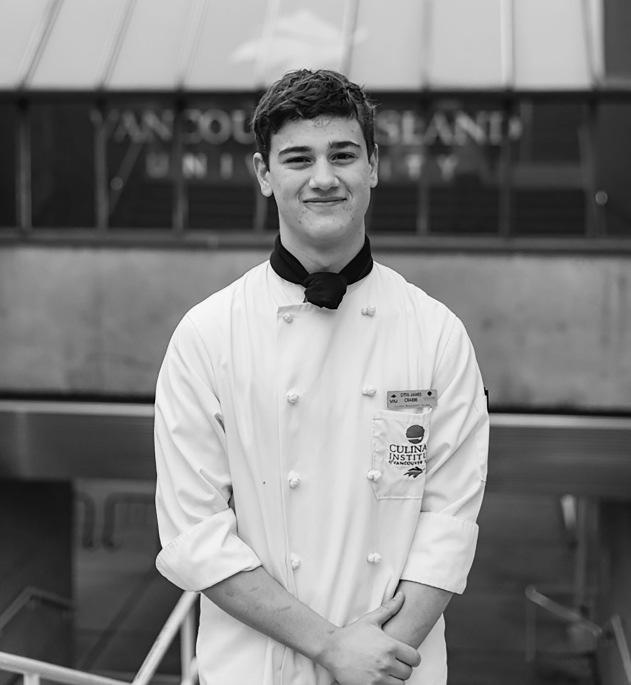
Photo supplied by Ottis Crabbe Ottis Crabbe is currently studying culinary management at Vancouver Island University.
Les Sam Construction
Residential . Commercial & Architectural Structures Construction Management & Consulting Forming & Framing Ph/Txt: 250.720.7334 les sam@shaw.ca


General Principles
1. Prior approval is required.
2. The client must: a. Be eligible for the NIHB Program; and b. Be currently enrolled or eligible to be enrolled in a provincial or territorial health insurance plan and continue to meet residency requirements for provincial/territorial health coverage.
3. For Transportation to Medical Services: For transportation to medical services outside of the country the client must be referred for provincially/territorially insured medical services by a provincial or territorial health care plan for treatment Shaganappi Plaza: wage change for Building Maintenance and Superintendent Windspeaker.com http://www.windspeaker.com/news/sweetgrass-news/building-maintenanceand-superintendent/ ammsa.com http://www.ammsa.com/content/careers/shaganappi-plaza-ltd-calgary outside of Canada.
4. For Supplemental Health Insurance Premiums: Full-time students enrolled in a post-secondary institution to study outside of Canada must provide a letter of confi rmation that tuition, which is not an eligible benefi t under the NIHB Program, has been paid.
What is covered?
For Supplemental Health Insurance Premiums: -
The cost of privately acquired health insurance premiums for approved students or migrant workers and their legal dependents will be reimbursed.
For Transportation to Medical Services: -
Transportation benefi ts when eligible clients are medically referred and approved for treatment outside of Canada by a provincial or territorial health care plan.
For further information on coverage outside of Country you are encouraged to call First Nations & Inuit Health Branch (FNIHB), Vancouver BC toll free @ 1-800-317-7878
What You Should Know- “Before” Leaving British Columbia
If you are leaving the province, you should be aware that your coverage may not pay all health care costs.
Health services provided outside Canada often cost more than the amount paid by the Ministry of Health Services. Sometimes the diff erence is substantial; for example, the amount we pay for emergency inpatient hospital care will not exceed $75 (Canadian) a day for United States of exceeds $1,000 (US) per day and can be as high as $10,000 a day for intensive care.
In addition, some items/services that may be a benefi t in BC are not covered outside the province; for example, prescription drugs and optometric services. Further, the Ministry does not subsidize fees charged for ambulance service obtained outside BC.
We advise you to buy additional health insurance to supplement your basic coverage before you leave the province, regardless of whether you’ll be in another part of Canada or outside the country – even if your company or travel agency can advise you about extra coverage to pay for any diff erence in fees and to provide benefi ts not covered by the Ministry. If you have a pre-existing medical condition, you must mention this when purchasing additional insurance as most policies will not cover treatment of that condition outside the province.
In some cases you may purchase an insurance policy where the insurance company has a signed agreement with the Ministry. This permits the company to pay physician and hospital claims and receive reimbursement on your behalf thus eliminating the need for you to handle your own claims.
NOTE: Ambulance – If you require ambulance service while in another province or outside Canada, you will need to obtain service from an ambulance company in that jurisdiction and will be charged the fee established by the-out-of-province service provider. Fees range from several hundred to several thousand dollars.
When purchasing additional out-of-province health insurance you are advised to obtain insurance that will cover emergency transportation while you are away and, if necessary the cost of transportation back to BC.

Photo supplied by Sandra Campbell A fi re to a Port Hardy apartment building on the evening of Jan. 17 displaced dozens of people. Woman leaps from second fl oor window during fi re
By Denise Titian Ha-Shilth-Sa Reporter
Port Hardy, BC – An Ahousaht woman escaped an early morning apartment fi re in Port Hardy, without serious injury. Melissa Dick, 38, of Ahousaht, was with her spouse in their second-fl oor unit at Town Park Apartments when a fi re broke out in the hallway on the night of Jan. 17. Andrew Dawson, 35, said the fi re alarm had gone off but, seeing no sign of fi re, he called the building manager to have the alarm turned off . He said he and his girlfriend Melissa were preparing to go to bed when he decided to go out for a smoke. “I told her I’d be right back, but when I went out in the hallway I saw thick, black smoke from the ceiling to about halfway down to the fl oor,” said Dawson. The fi re was down the hall to his left. He could not see fl ames but saw that the walls in the hallway were glowing orange. “I started banging on doors and walls, telling everyone to get out, that this was a real fi re,” said Dawson. The fi re was down at the end of the hall, blocking one of the exits. “I ran up to the third fl oor and banged on doors; I guided the people out the one open exit,” he said. By the time he got back down to the second fl oor, the hall was impassable, with smoke so thick he couldn’t see his hand in front of him. Dawson managed to help evacuate the people on the fi rst fl oor before running out of the building. Once outside, he looked up at the windows of his apartment. To his surprise, Melissa was still in the building, sitting on the window ledge of the second fl oor. An uncle, his girlfriend and Melissa were tying sheets together to escape the building. “They were getting ready to shimmy down the sheets but the fi re was too close so I told them to jump. I promised to catch them or at least break their fall,” Dawson shared. Melissa began to ease herself down the sheet but lost her grip and fell into the arms of Dawson. She was sore, but otherwise uninjured. According to Dawson, seven people from three apartment units on the second fl oor jumped from the windows. One woman dropped her dog out the window, breaking its leg. Dawson’s sister broke her leg from the fall and his uncle’s girlfriend fractured her tailbone. Fortunately, thanks to Dawson’s heroic eff ort, nobody from the third fl oor was forced to jump. Port Hardy Fire Chief Brent Borg told Ha-Shilth-Sa that the call came in 11:18 p.m. on Jan. 17 in the C Block of the Town Park apartment complex. The fi re burned through the second-fl oor hallway. Thirty members of the Port Hardy Fire Rescue along with six members from the neighboring Port McNeill Fire Rescue responded to the blaze. “The fi re is suspicious – there was a mattress in the hallway and that’s not normal,” said Borg, adding that the RCMP are investigating. There were no sprinkler systems in the building but there was a functioning fi re alarm. According to Borg, there are four buildings in the complex. Some have undergone renovations but not C Block. He confi rmed that some residents were injured after jumping from windows to escape the fi re. There were 18 units in the block, a few were vacant. Borg said that emergency support services came in and put up 24 residents in a hotel. Dawson says that he and Melissa missed out on the motel room and are, for now, couch surfi ng with relatives. He said a few older people were put in vacant apartments in other buildings. Borg noted that while there was extensive damage in the hallway, apartments in the building were not burnt because doors were closed. “We like to tell people close before you doze,” said Borg, noting that closed doors act as incredible fi re barriers. “The insides of the apartments were pristine yet the hallway was completely torched.” He went on to say that the residents’ belongings should be fi ne. In 2019 a woman lost her life in a fi re at the Town Park Apartments. Borg said that the fi re was confi ned to an apartment and is believed to have started by a lit candle or cigarette. He said the victim made it out of the building but perished when she ran back in to save her cat. Borg said it is important for people to remember that if they get out of a burning building, they need to stay out. Dawson says he’s been told that they won’t have access to their apartment for four to six months. He said that the fi rst fl oor of the building has already been looted. Andrew and Melissa say their most immediate need is clothes. He wears size 36-38 jeans, men’s XL sweats and shirts. Melissa wears women’s size XL clothing. Dawson can accept fi nancial donations by e-transfer at kidd_dawson85@ outlook.com
Position Summary: Reporting to Chief and Council, the Tribal Administrator oversees and directs the operations of the organization to meet the Nation’s vision, mission, and values. This position is responsible for the ongoing success of the Nation’s operations, providing sound leadership and direction to its employees and establishing and maintaining long-term relationships with external business partners.
Deadline for receipt of application is: February 15, 2021 by 4:30pm
Submit your resume and cover letter to: jobs@tla-o-qui-aht.org or Tla-o-qui-aht First Nation P.O. Box 18 Tofi no BC, V0R 2Z0 Tla-o-qui-aht First Nations Job Opportuntiy Home & Community Care Worker


Position Summary: Provide home care support to the Nation’s members who require additional help to maintain a healthy standard of living given their medical state, on an on-call basis. This posting is on-going

